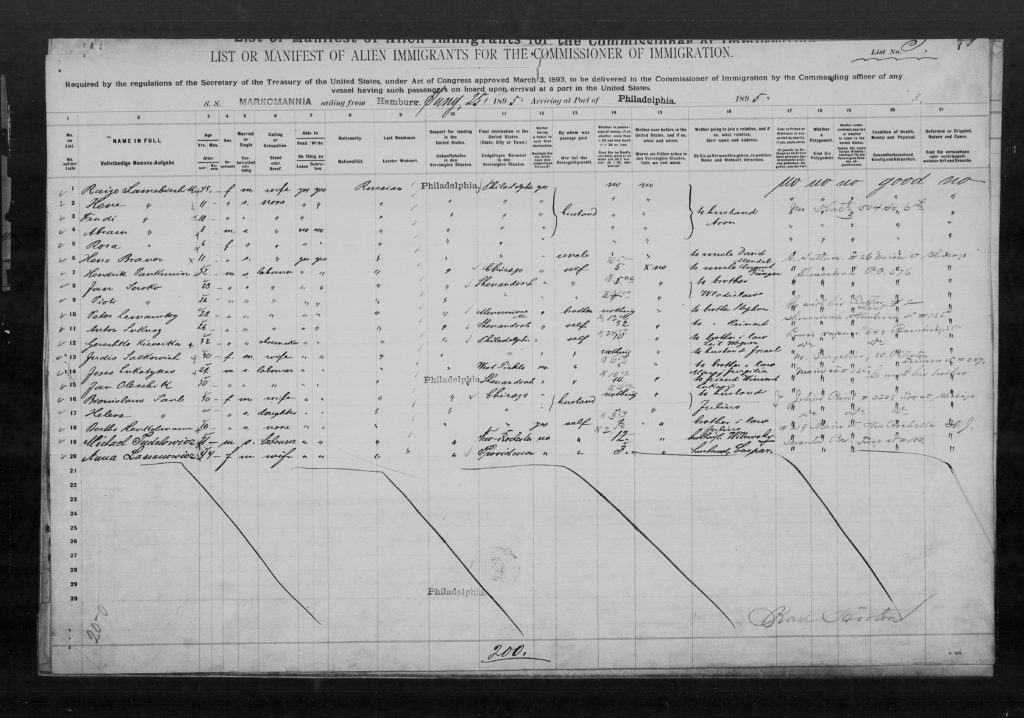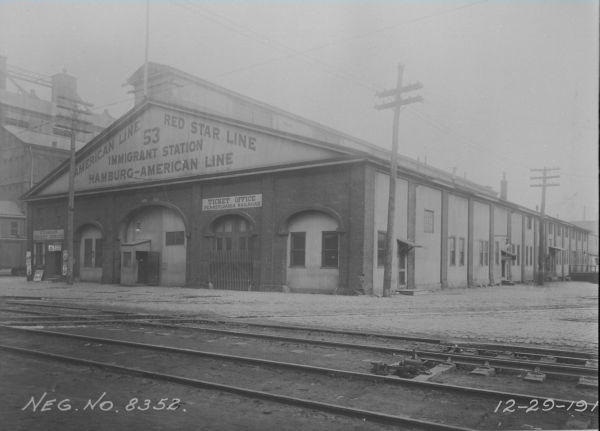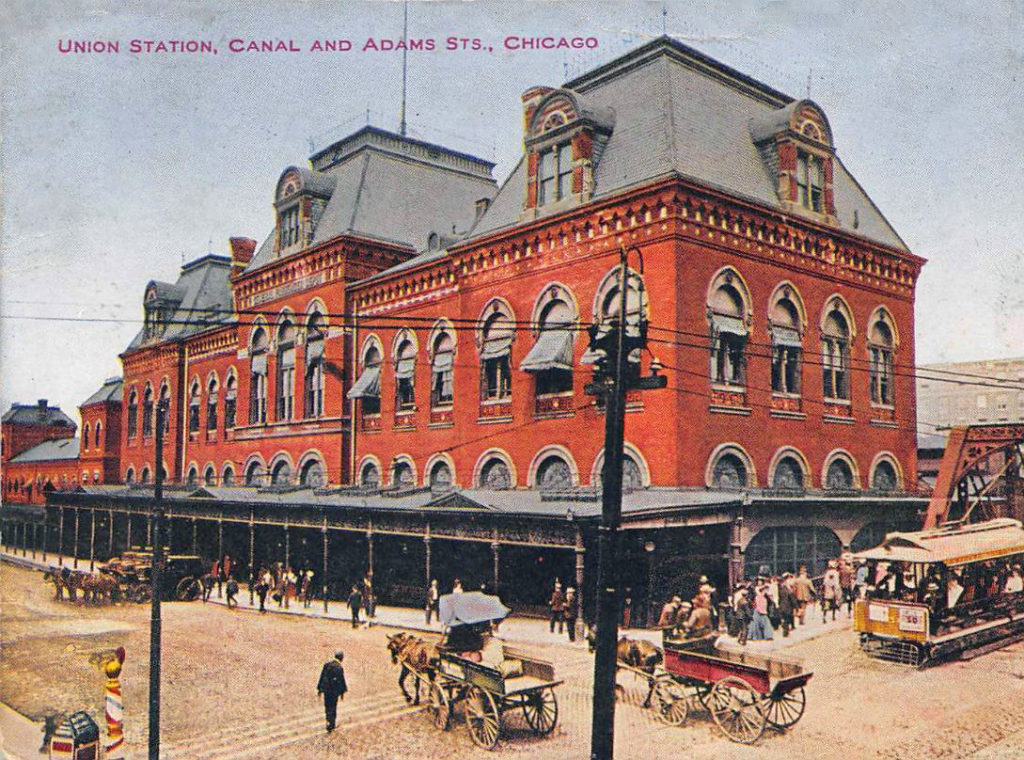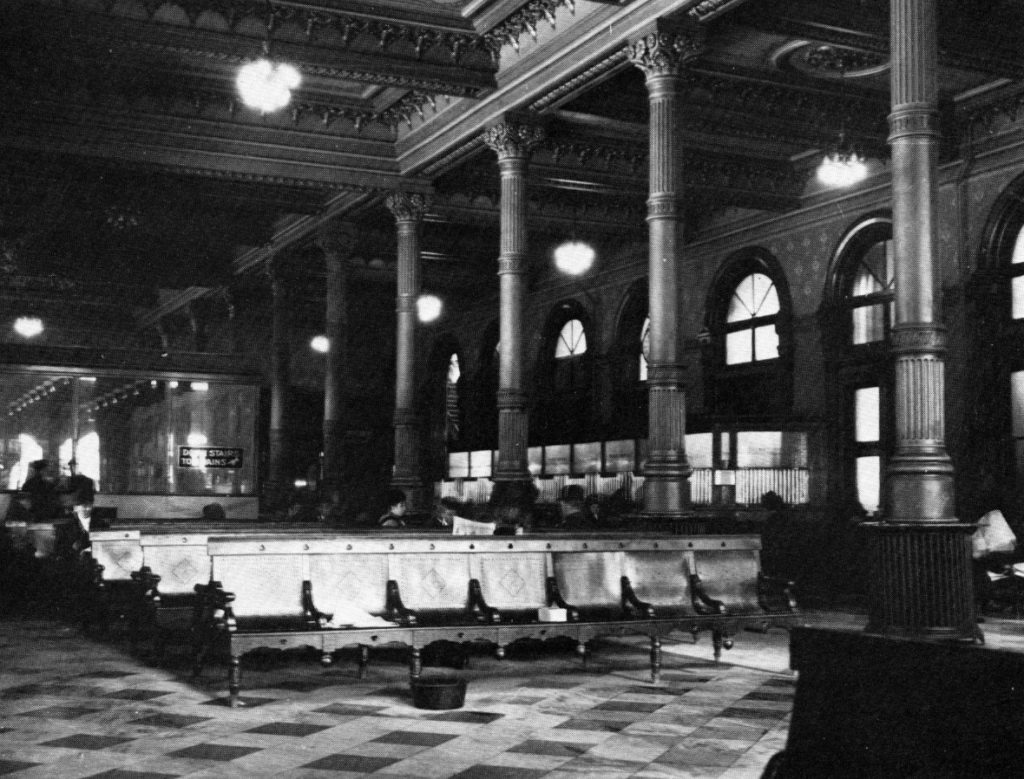New York was the preeminent port for European immigrants coming to America in the late nineteenth and early twentieth centuries. So why would Brunis, Helen and Bertha enter through Philadelphia instead?
We can only speculate on an answer. Compared to New York, Philadelphia was a minor immigration port. During the 1890s less than 6% of all immigrants to the United States passed through the city. Since Philadelphia was out of the way, perhaps the fares were cheaper. Or it may have been that Philadelphia had better rail connections to the west. By 1895 Julius had already moved to Chicago and his little family would join him there, so ease of transport — and perhaps cost — from port of entry to Chicago would have been important.
In 1895 immigrant ships sailing to Philadelphia were required to stop at two separate screening and quarantine stations. The first stop was at a federal government station, either Cape Henlopen on the Delaware side of the entrance to Delaware Bay, or the overflow station on Reedy Island about sixty miles north near the mouth of the Delaware River. At either station, immigrant ships would set anchor and raise a yellow flag notifying the station that the ship was ready for inspection. A small skiff with the station doctor and his attendants would then row out, board the ship, and inspect all the passengers for disease. This would have been at least the third time since leaving Poland that Brunis and the girls were looked over for infection.
But the inspections were not over yet. A terrible yellow fever epidemic in Philadelphia in 1793 had led the Commonwealth of Pennsylvania to build its own quarantine hospital, the first in the United States, in 1799. Known as “The Lazaretto,” an international term for a quarantine station for maritime travelers, this state-run inspection station located about ten miles down river south of Philadelphia was still in operation in June 1895. Thus immigrant ships were obliged to stop one more time before finally arriving in the city itself.
The Markomannia docked at the Washington Avenue wharves, at the time a bustling center of commerce at the heart of the third largest city in the United States. The wharves were owned by the Pennsylvania Railroad and packed with warehouses, factories, sugar refineries, freight depots, and grain elevators, all attracted by the rail connections to the rest of the country. The immigrant’s last inspection would be conducted here by a customs officer. It may have been this officer who asked Brunis how much money she had in her possession and what her final destination was. According to the Markomannia’s arrival manifest, Brunis carried a mere $3 in her possession. In fact, the word “nothing” is originally written down but crossed out and replaced with “$3.00”. Can you imagine!? Julius is recorded as having paid for the passage of not only Brunis and Helen, but for Bertha as well. Having finally passed their last inspection, the little troop would have gone downstairs to a ticket office and reception area. There they retrieved their pre-paid tickets and, with so little money in hand, surely waited there to board their train westwards.
Brunis, Helen and Bertha surely took the Pennsylvania Railroad from Philadelphia to Chicago (this should sound familiar — Pennsylvania R.R. is one of the four railroad properties in the game Monopoly). Not only did the company own the railyard and the wharves, but also operated all the main connections between the two cities. The train entered Chicago from the south and terminated at the original Union Station (aka Union Depot) on the South Branch of the Chicago River (currently the location of 120 South Riverside Plaza). In its spacious lobby graced by a striking high-vaulted ceiling, after three years and three months, Julius, Brunis and Helen were finally reunited.
SOURCES
David S. Barnes, “The Lazaretto“.
Barbara Klaczynska, “Immigration (1870-1930),” Encyclopedia of Greater Philadelphia.
Fredric M. Miller, “Philadelphia: Immigrant city“.
“Union Depot,” Chicagology.
“Chicago, IL Depot: The Original 1881 Union Station,” Towns and Nature.



